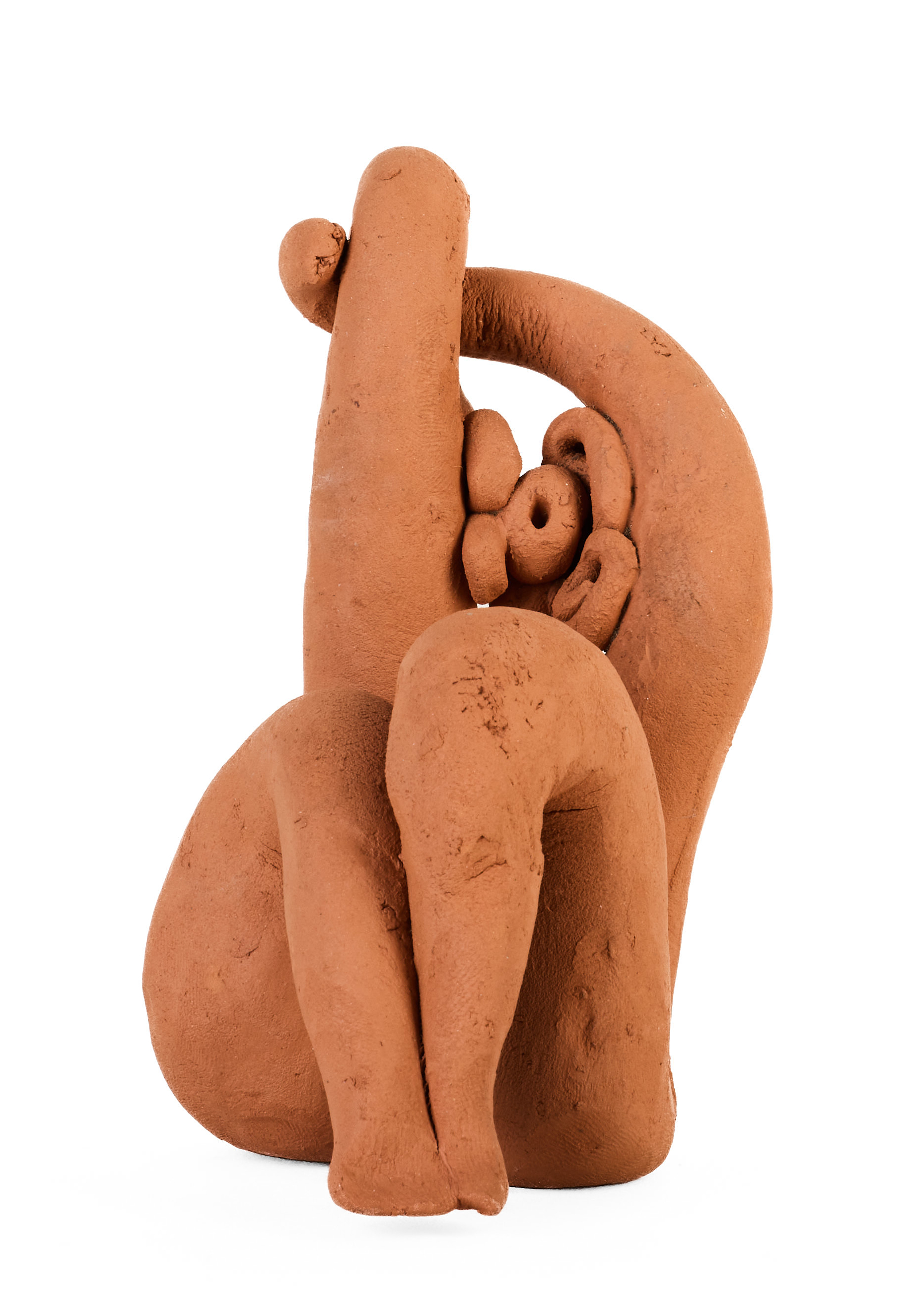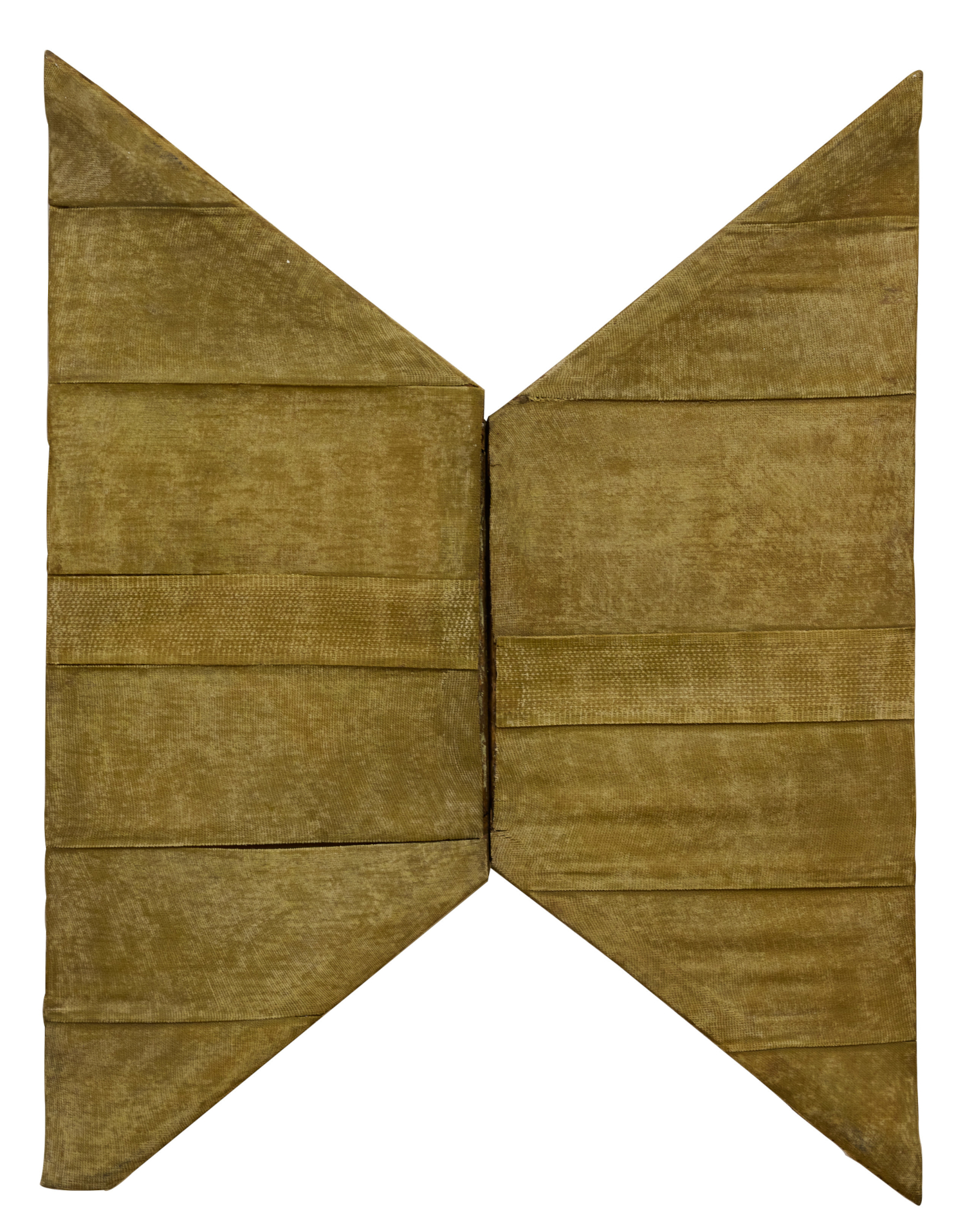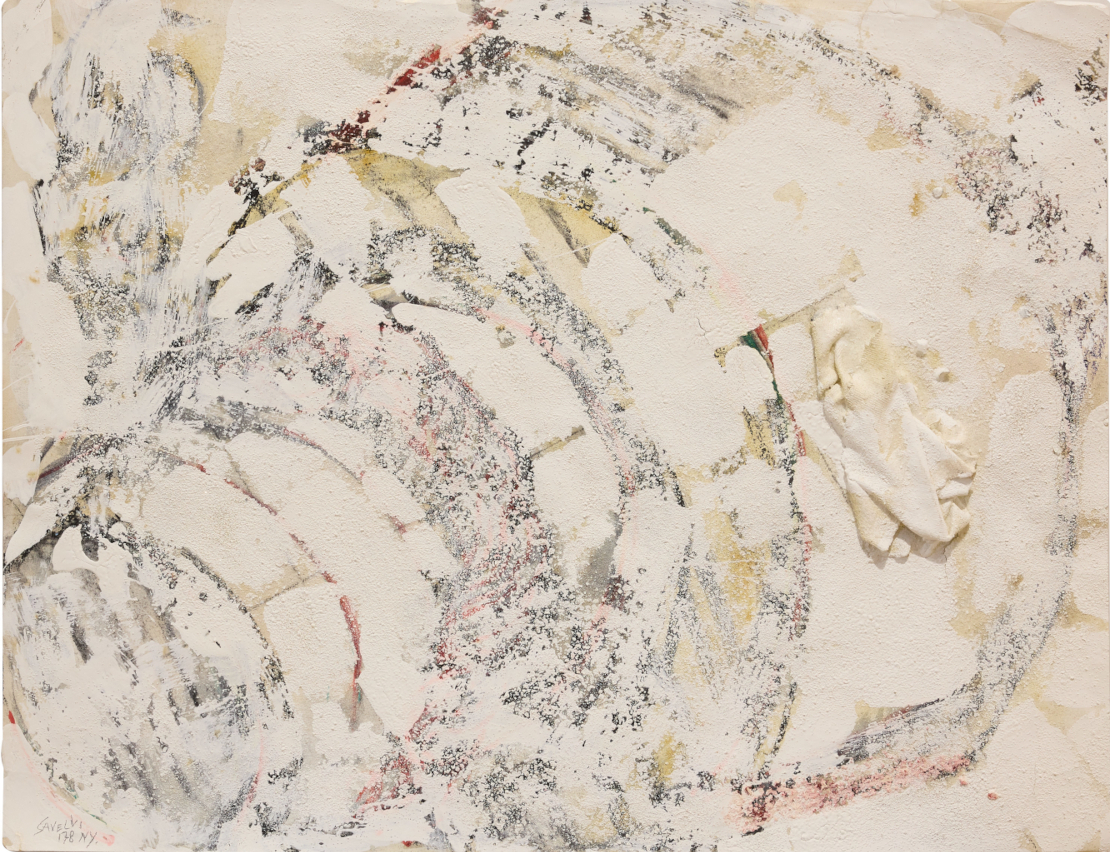Whitehot Magazine
September 2025
"The Best Art In The World"
"The Best Art In The World"
September 2025
The American dream through the talent of three Italian artists: Costantino Nivola, Salvatore Scarpitta and Angelo Savelli.

Costantino Nivola, Senza titolo, 1977, terra cotta, cm h 12x6,5x8,5
By MANUELA ANNAMARIA ACCINNO May 26, 2025
The half-century-long myth of the American dream has dominated the collective narrative of a nation built on the idea that success, freedom, and enrichment are attainable through individual effort and the ability to dream big. Don DeLillo's quote, ‘To consume in America is not to buy, but to dream,’ opens a door to a deeper level of this cultural argument, suggesting that the true meaning of consumerist conduct lies not solely in the material act of buying, but in the symbolic dimension of desire, hope, and aspiration. This narrative has traversed multiple cultural spheres throughout the 20th century, most prominently art; in particular that of Italian artists such as Costantino Nivola, Salvatore Scarpitta and Angelo Savelli, it reveals a dynamic in which the dream is realized not only as an individual aspiration, but as a space for questioning and interpreting one's cultural identity and America itself. Within this framework, DeLillo emphasizes how the territory of exchange and purchase is configured as a symbolic place in which the dream can be embodied through participation in a system that fosters collective imagination, hopes and aspirations. This concept becomes even more pregnant when analyzing the artistic experience of artists such as Nivola, who, having emigrated to the United States, allowed himself to be seduced by the charms of the New York metropolis, which affected him profoundly: "I knocked on the doors of this wonderful city and hundreds of doors, windows and hearts opened. His painting and stone sculpture became vehicles of a frontier dream, of the creation of a new identity, of an ongoing dialogue between the Mediterranean past and the American present.
Nivola, a multifaceted Italian sculptor and artist, found in New York not only a space for technical experimentation, but also a symbol of dynamism and possibility. His viscerally vibrant writing, jotted down in notebooks as he walked through the streets of the city, represented a mental map of his dream: a city that, despite its cold modernity, opened like a portal to new opportunities for creation and belonging. His visual narrative reflected this tension between the concreteness of materials and the fluidity of desire, between the hardness of stone sculptures and the lightness of the dream of a renewed identity. For him, the American dream thus manifested itself as a kind of invisible dialogue between the walls of his Italian-ness and the promises of freedom and renewal of New York City. His art took the form of an attempt to translate into material form that dialectic between memory and desire, between roots and future projection. The possibility of opening “doors, windows and hearts” thus also became a metaphor for his work, rich in an imagination that fed on encounters, hopes and new visions. If we want to extend this reflection, we can also consider the role of other Italian artists such as Salvatore Scarpitta and Angelo Savelli, whose works are part of a complex path of reinterpretations and revisitations of American cultural mythologies.
 Costantino Nivola, Esperanzia, 1975, litografia, cm 83,5x66
Costantino Nivola, Esperanzia, 1975, litografia, cm 83,5x66
Scarpitta, with his soft, hybrid sculptures, represents an attempt to appropriate the American dream through a plastic language that evokes movement and continuous transformation. His art thus mirrors the tensions between form and fluidity, between private experience and collective narrative, in a universe where consumption is no longer merely material, but symbolic and artistic.
 Salvatore Scarpitta, Senza titolo (kite for invasion), 1961, tecnica mista su tela applicata su cartoncino, cm 89,5x65,5
Salvatore Scarpitta, Senza titolo (kite for invasion), 1961, tecnica mista su tela applicata su cartoncino, cm 89,5x65,5
Finally, Angelo Savelli, with his research into forms and spaces, contributes to creating an image of America as a stage of possibilities, but also of complexities and contradictions. His art is structured as an exercise in the exploration of identity, chiaroscuro and multifaceted, reflecting the same complexity of the American dream that is not reduced to the mere diatribe between success and failure, but is configured as a mosaic of aspirations, hopes and disappointments.
 Angelo Savelli, Senza titolo, 1978, acrilico e tecnica mista su cartoncino, cm 45x57
Angelo Savelli, Senza titolo, 1978, acrilico e tecnica mista su cartoncino, cm 45x57
Paula Seegy Gallery, based in Milan at Via San Maurilio 14, presents a comprehensive group exhibition entitled “Nivola, Savelli, Scarpitta: an international trio”, curated by Luigi Sansone, which can be visited from 22 May to 28 June. This exhibition offers an unprecedented and in-depth dialogue between the works of three important artists, leading figures of a vibrant artistic season of the second half of the 20th century, whose path was marked by an intense interconnection between Italy and the United States. The exhibition is proposed as a visual and historical journey, crossing the geographical distance between the two continents to reconstruct the relationships and cultural contaminations between these three protagonists. Costantino Nivola, Angelo Savelli and Salvatore Scarpitta were fundamental figures in the international art scene, contributing not only with their works but also promoting a lively intercultural exchange. The exhibition emphasizes their ability to act as bridges between the two sides of the Atlantic, fostering a dialogue between Italian and American artistic traditions. The intensity of this experience stems from the artists' ability to cross physical and intellectual borders, fueling a vortex of cultural exchange that involved gallery owners, institutions and fellow artists. As Sansone points out: “They lived and breathed the art of both continents, contributing with their work, travels, exhibitions and writings to make Italian art known in America and, at the same time, to make American art known in Italy.” This role as “ambassadors” of art represents the core of their legacy, an example of how art can become a vehicle for dialogue and understanding between different cultures. Through this exhibition, full of sculptures, paintings and drawings, the Paula Seegy Gallery intends not only to highlight the singularities of each artist, but also to emphasize the interconnection between their stories and their contribution to the international scene, highlighting how their works are the result of tireless research and creative ferment that has transcended geographical and cultural boundaries.
The exhibition is accompanied by a catalogue that enriches and deepens the exhibition experience, thanks to the presence of texts written by Luigi Sansone, renowned expert and art critic. Sansone, author of the catalogue raisonné on Scarpitta, is still today an indispensable reference figure, also for Savelli. The publication does not merely present the works in a simple manner, but aims to offer an accurate analysis, providing visitors with more in-depth interpretation tools to better understand the exhibition. WM

Manuela Annamaria Accinno
Manuela Annamaria Accinno, born and raised in Milan, is an art historian and critic with a degree from the University of Milan. She has been actively collaborating for several years with radio stations and magazines specializing in the field of art.
view all articles from this author









